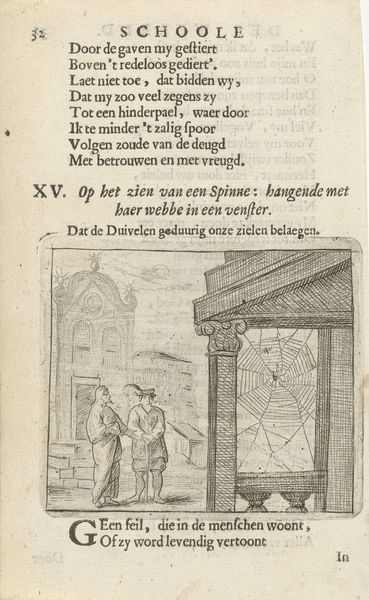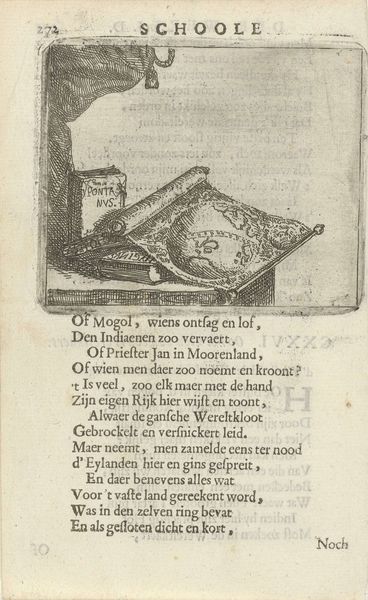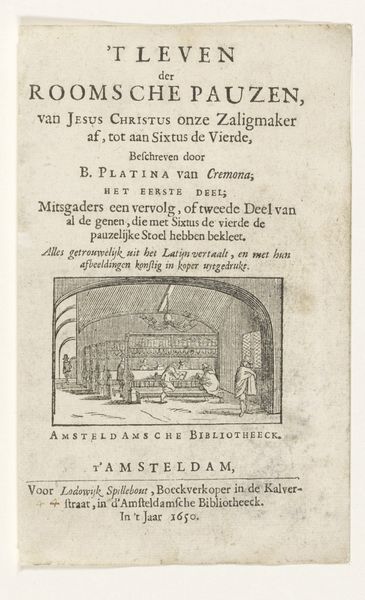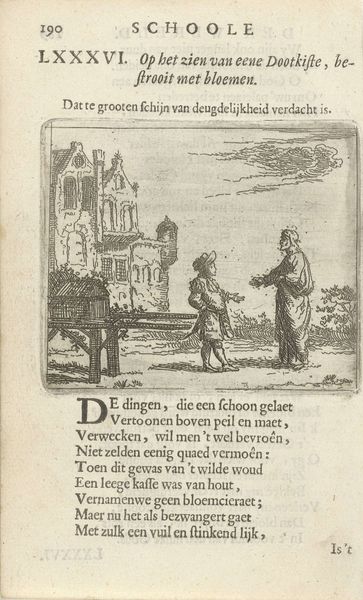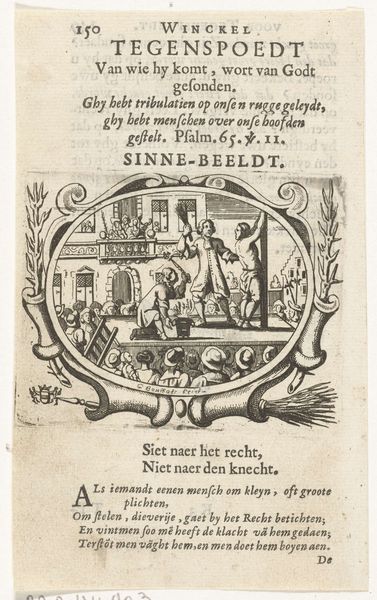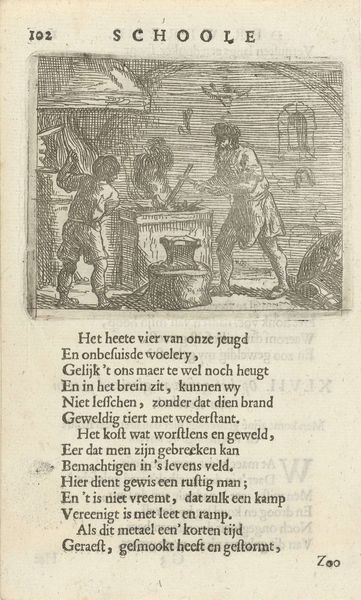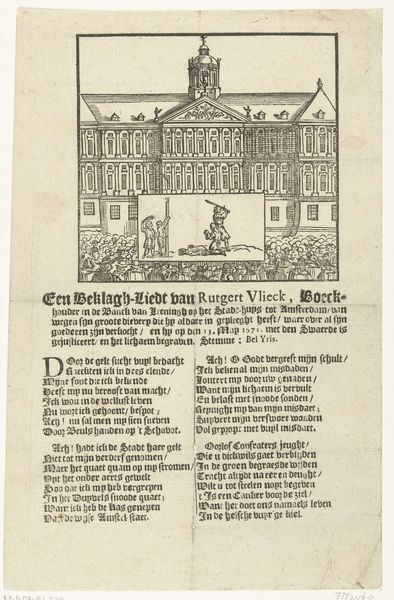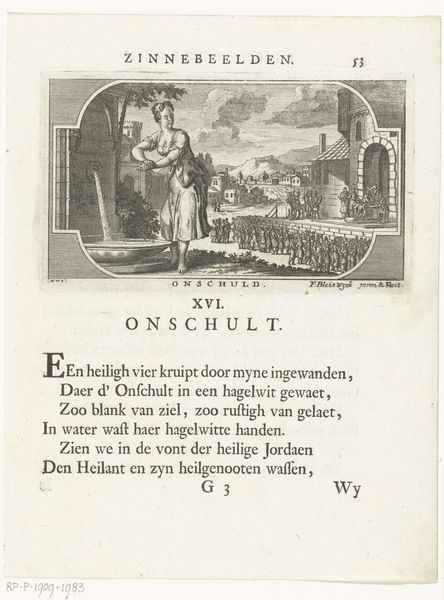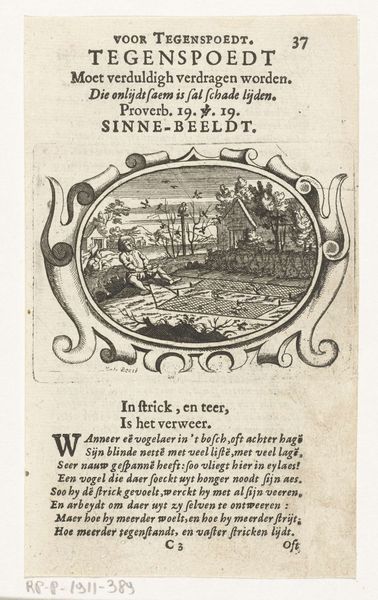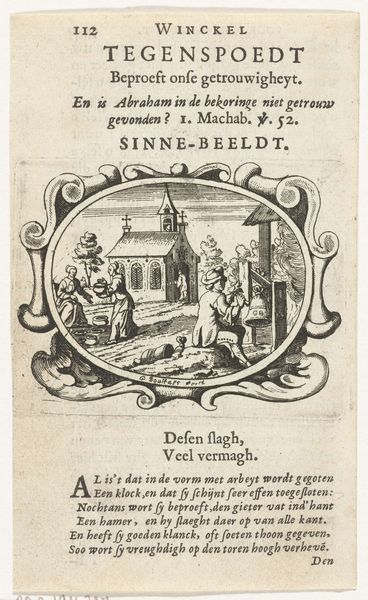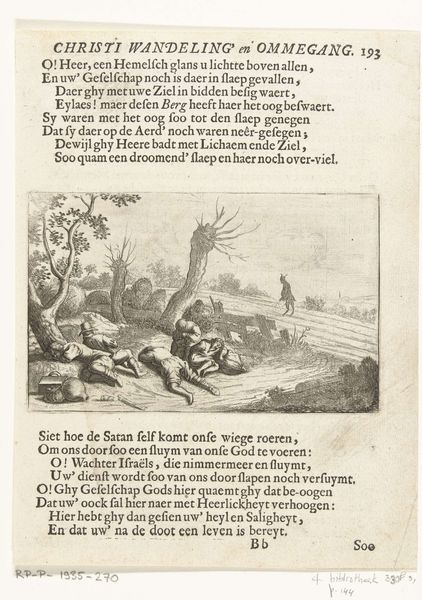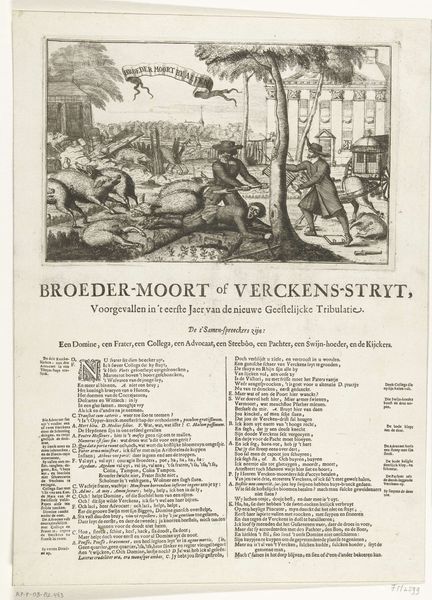
Tekstblad met verzen bij de prent van de ruïne van het afgebrande Oude Stadhuis van Amsterdam, 1652 1652
0:00
0:00
drawing, print, paper, engraving
#
drawing
#
dutch-golden-age
# print
#
old engraving style
#
hand drawn type
#
landscape
#
paper
#
engraving
Dimensions: height 148 mm, width 400 mm
Copyright: Rijks Museum: Open Domain
This print, made by Arnold Colom in 1652, records the smoldering ruins of Amsterdam’s Old Town Hall. Colom used etching, a printmaking technique that democratized image-making in the 17th century. The etched line is created through a chemical reaction. The metal plate is covered in a waxy ground, and then the artist scratches away lines with a needle, exposing the metal. The plate is then immersed in acid, which bites into the exposed lines. This process allows for the creation of detailed and reproducible images. The medium itself speaks to broader social issues of labor and access. Compared to unique paintings, prints could be made in multiples, making imagery available to a wider public. Colom’s choice of etching reflects a shift in the art world towards broader accessibility and engagement with contemporary events, like the devastating fire memorialized in this print. It collapses traditional distinctions between fine art and documentation.
Comments
No comments
Be the first to comment and join the conversation on the ultimate creative platform.
